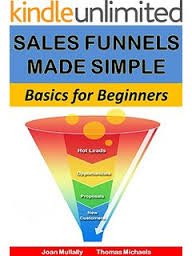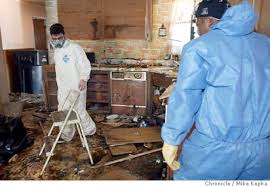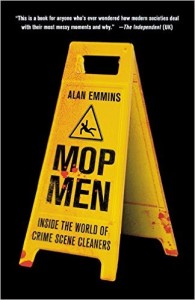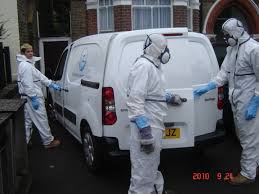 They call it The Crime of the Century—the 20th century that is. On March 1st in 1932, famed aviator Charles Lindbergh’s twenty-month-old son was brazenly snatched from his second-story nursery at the Lindbergh mansion outside Hopewell, New Jersey. The boy was found dead in nearby woods on May 12th. In 1934, Bruno Richard Hauptmann was charged, convicted, and executed in the electric chair for being the sole perpetrator of the crime. But was he?
They call it The Crime of the Century—the 20th century that is. On March 1st in 1932, famed aviator Charles Lindbergh’s twenty-month-old son was brazenly snatched from his second-story nursery at the Lindbergh mansion outside Hopewell, New Jersey. The boy was found dead in nearby woods on May 12th. In 1934, Bruno Richard Hauptmann was charged, convicted, and executed in the electric chair for being the sole perpetrator of the crime. But was he?
The “Little Lindy Case” is an armchair detective’s delight. It’s been one for nearly ninety years and shows no sign of going away. There are dissenting sides in the Bruno Hauptmann camp. Some say he was guilty as hell. Some say he was totally innocent—as he steadfastly proclaimed up to the moment they ran 10,000 volts through his head. And some say he had a part, for sure, but other co-conspirators were involved.
Hauptmann was caught red-handed with marked ransom money as well as being linked to the crime through indisputable physical evidence. There’s no denying this. However, there were no eyewitnesses or anything other than circumstantial factors that secured Hauptmann’s fate. He never confessed and proclaimed total innocence to the end.
Were there others who kidnapped and killed Charles Augustus Lindbergh Junior or “Little Lindy” as he was known? Let’s look at the case facts that have been so well presented and preserved over the years.
 Charles Augustus Lindbergh Senior was nothing special before he burst into fame. Lindbergh was the first man to fly solo and non-stop from America to Europe in 1927. A relative once said, “If it weren’t for surviving that flight, he’d have ended up running a gas station in Minnesota.”
Charles Augustus Lindbergh Senior was nothing special before he burst into fame. Lindbergh was the first man to fly solo and non-stop from America to Europe in 1927. A relative once said, “If it weren’t for surviving that flight, he’d have ended up running a gas station in Minnesota.”
But the world was ready for a hero like Charles Lindbergh in the pre-depression days when heroes were rare and the markets were tanking. Lindbergh was a poster boy of bravado, daring, and handsomeness and that led him to money. He married millionaire socialite Anne Morrow in 1929 and they produced a son, Charles Jr. in 1930.
Charles and Anne Lindbergh relished privacy after being world-famous celebrities. They’d hobnobbed with presidents and royalty and business leaders and everyone in the ranks of entertainment, publishing, and charity. They needed a getaway and built a home in rural New Jersey which was far from the New York madness.
A nanny laid Little Lindy to rest in his crib at nine p.m. on the night of March 1, 1932. She returned for a check at ten and the toddler was gone. Charles Lindbergh was in the home at the time and he took over—finding a handwritten ransom note near the sill of the open window. It demanded $50,000 for the child’s safe return.
The local police contacted the New Jersey State Police for help. A search of an already-contaminated crime scene (caused by the Lindbergh family interference) found three clues later proving vital. First was the note that was handled by many. Second was a home-made wooden ladder with peculiar construction thought to be used by the perpetrator(s) to climb to the second-floor window for access. Third was a wood chisel found lying on the ground below the window.
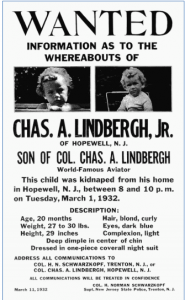 By the next day, the Lindbergh kidnapping news hit the wire and went world-wide. Masses of curiosity seekers plagued the mansion scene and any attempt to keep negotiations secret was shattered. Already, theories formed and frauds threatened to take a focused investigation into the gutter.
By the next day, the Lindbergh kidnapping news hit the wire and went world-wide. Masses of curiosity seekers plagued the mansion scene and any attempt to keep negotiations secret was shattered. Already, theories formed and frauds threatened to take a focused investigation into the gutter.
On March 5, Charles Lindbergh Sr. got a follow-up communication in the mail. It was also handwritten and obviously done by the first note’s hand. This led to an intermediator being appointed to negotiate with the note writer. A series of fifteen hand-written notes or communiques followed before the $50,000 in ransom was delivered to a shadowy man with a German accent in a dark New York cemetery.
Charles Lindbergh Jr.’s body was accidentally discovered on May 12, 1932. It was 75 feet off the road, 2 miles from the Lindbergh home. The remains were decomposed and consistent with death occurring at the same time of the abduction. An autopsy found a fractured skull, but the true cause of death couldn’t be established.
All law enforcement levels helped in the Lindbergh case. One was the Internal Revenue Service who devised a clever plan to mark the ransom money. They used a controlled amount of “Gold Currency Notes” that had individual serial numbers, therefore being identifiable to the Lindbergh case.
The genius of the “Gold Notes” is that the U.S. Treasury already planned to move off a gold-based currency system by 1933. This wasn’t public knowledge at the time of the ransom payment and the bills would be recognized as common tender. The IRS people knew, however, that these notes would soon be publicly recalled and note-holders would be required to cash them in or lose the value. That would force the ransom notes to be circulated instead of hoarded.
The plan worked.
Shortly after the payment, the IRS and the police distributed a serial number list of ransom Gold Currency notes to all banks in the New York and New Jersey area. Sporadically, marked bills showed up in the Bronx region but no pattern emerged. But once the Gold Note recall came, marked bills flooded the region.
In September 1934, a Bronx service station manager received a $10 Gold Currency note. He knew nothing of the trap, but he knew of the recall and protected himself against counterfeit by recording the passer’s car license number on the bill—New York marker 4U-13-41. The manager deposited the marked bill at his bank where an astute teller checked the serial number and found it was a Lindbergh bill.
The police ran the plate. It came back to Bruno Richard Hauptmann of 1279 East 222 Street in the Bronx. They surveilled the place, arrested Hauptmann leaving home, and found another marked Gold Currency bill in his wallet. The search of his home found a lot, lot more.
 Bruno Hauptmann was a thirty-five-year-old illegal immigrant from Germany. He was once deported from the US because of his European criminal record—a loner and cat-burglar with an MO of using ladders to access second-story windows. Hauptmann also had a carpentry background with the skills and tools to make a wooden ladder.
Bruno Hauptmann was a thirty-five-year-old illegal immigrant from Germany. He was once deported from the US because of his European criminal record—a loner and cat-burglar with an MO of using ladders to access second-story windows. Hauptmann also had a carpentry background with the skills and tools to make a wooden ladder.
The police searched Hauptmann’s premises. In his garage was over $13,000 of the marked ransom money cleverly rolled up and hidden inside specially-made wooden boxes. That included more Gold Currency notes as well as standard United States Treasury bills.
The police also found materials and tools consistent with building the wooden ladder found at the scene, a matching toolset to the scene wood chisel, and significant writing samples that linked Bruno Hauptmann to the fifteen notes written to the Lindberghs.
Bruno Hauptmann was tried before a New Jersey jury in 1935. It was the “Trial of the Century” by any standards and was a media circus. After weeks of evidence from hundreds of witnesses, the jury unanimously convicted Hauptmann of kidnapping and murdering Charles Lindberg Jr. in the first degree.
 There were motions and appeals and short stays, but Bruno Hauptmann lost his life to Old Sparky on April 3, 1936. He never confessed or named accomplices. Till the switch was thrown, Hauptmann denied all involvement.
There were motions and appeals and short stays, but Bruno Hauptmann lost his life to Old Sparky on April 3, 1936. He never confessed or named accomplices. Till the switch was thrown, Hauptmann denied all involvement.
Despite what seemed like a clear-cut case, this muddied matter has had intense scrutiny since day one. It still has. There are online cults that would slit their wrists for a chance at post-death clemency for what they believe was a wrongful conviction and the execution of an innocent man.
Why do they believe that? It seems like despite the evidence and how fair the process, it’s simply impossible to convince some people of the truth when they already have a mindset to want the alternative. Here are the main evidence points in what led to Bruno Hauptmann’s conviction.
The Ransom Notes
The first note surfaced inside the room where Charles Lindbergh Jr. was abducted. It was hand-written in particular ink on particular paper. The writing was unique in that it was script with printed numerals and the signature was absolutely outstanding.
 The note writer used a pattern of two colored and overlapping dots with three holes perforated through them. No doubt, this was foreplaning to identify the real kidnapper from copycats. This signature remained consistent through the subsequent fourteen more notes delivered to the Lindberghs.
The note writer used a pattern of two colored and overlapping dots with three holes perforated through them. No doubt, this was foreplaning to identify the real kidnapper from copycats. This signature remained consistent through the subsequent fourteen more notes delivered to the Lindberghs.
Hauptmann’s known handwriting specimens matched the ransom notes. The best experts in the fields agreed on this. The defense, at trial, could not rebut this. Also, similar paper with matching tears was in his house as well as matching writing implements and the hole-punching tool. Bruno Hauptmann wrote those notes and there was no denial.
The Wooden Ladder
The homemade wooden ladder also sunk Bruno Hauptmann. It was found fifty feet from the abduction second-story window and it was unique. It was made, according to professional opinions, by someone with carpentry skills and was designed to be disassembled in three pieces so it could be transported in a passenger car.
A wood expert with impeccable credentials testified about the ladder at Hauptmann’s trial. He was able to trace wood components in the scene ladder to pieces Hauptmann had sourced at a lumber supplier Hauptmann had worked for as well as boards coming from the attic floor in Hauptmann’s house.
The expert physically matched what’s known as “Rung 16” to Hauptmann’s attic boards through wood grains, nail holes, knots, cuts, plane marks, and species. There was no question—in the expert’s or the jury members’ minds—that Bruno Hauptmann personally manufactured this ladder with materials and tools found at his home.
The Tools
The scene search at the Lindbergh residence found a wood chisel on the ground below the nursery window. It was a “Buck Brothers” brand with a ¾ inch cutting width. When the police searched Bruno Hauptmann’s garage/workshop, they found a matching set of “Buck Brothers” wood chisels. It was complete, except for the ¾ inch tool.
 The police also found a wood planning tool in Hauptmann’s shop. It had a particular 2-degree bevel cutting edge with striations on the blade that physically matched the plane marks on ladder members. This was proven at the microscopic level and was a breakthrough in the courts accepting forensic toolmark evidence.
The police also found a wood planning tool in Hauptmann’s shop. It had a particular 2-degree bevel cutting edge with striations on the blade that physically matched the plane marks on ladder members. This was proven at the microscopic level and was a breakthrough in the courts accepting forensic toolmark evidence.
Furthering toolmark evidence, the investigation team also proved that a handsaw in Hauptmann’s tool kit cut and prepared sections of the homemade ladder. The saw kerf width, teeth settings, and stroke angle were consistent with cuts on the ladder’s members.
Then there were the nails. The nails in the scene ladder precisely matched a stock of nails found in Bruno Hauptmann’s garage. The size, shape, length, and materials were identical to what nails were in the Lindbergh ladder.
The Money
Without question, Bruno Hauptmann had the Lindbergh ransom money. And without question, no one else had a stash of it either. That’s because Hauptmann acted alone and there was no one else to share it with.
The forensic accountants did an amazing job for their time. This was before the computer and online banking days when transactions got recorded in ledgers and on carbon paper receipts. The banking sleuths followed the money and they sealed the case.
Bruno Hauptmann received $50,000 in various forms of United States negotiable currency. The forensic accounting team accounted for $49,986 of this going through Bruno Hauptmann’s hands. That was from cash-on-hand, bank deposits, transfers, withdrawals, purchase receipts, and stock market investments. The team estimated Hauptmann lost over half on bad investments.
Were Other Parties Involved in the Lindbergh Kidnapping and Killing?
The short answer is “No”. There’s not the slightest suggestion—based on evidence—that anyone else was involved in the Lindbergh plot. During Hauptmann’s trial, his lawyer Edward Reilly tried to build a smokescreen around Hauptmann being a participant rather than a killer. Reilly wasn’t the most effective barrister in the barn. His nickname was “Ed – Death House – Reilly” as he had a somewhat abysmal track-record of losing capital murder cases and sending his clients away.
No, there is no evidence of anyone co-conspiring with Bruno Hauptmann to kidnap and kill baby Lindbergh. That’s because non-events leave no evidence. It didn’t happen any other way than Bruno Hauptmann—acting alone—planned and carried out this heinous crime.
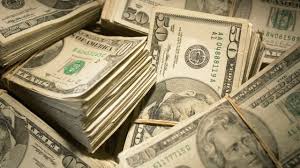 Why did he do it? Money. Pure and simple. He wanted the money and the prosecution did a marvelous job of painting Hauptmann from a pauper to a prince pre-and-post crime. He lived high off the hog for a few years after collecting the ransom, then he got piggishly careless and was caught.
Why did he do it? Money. Pure and simple. He wanted the money and the prosecution did a marvelous job of painting Hauptmann from a pauper to a prince pre-and-post crime. He lived high off the hog for a few years after collecting the ransom, then he got piggishly careless and was caught.
How did he do it? This takes a bit of analogy. For one thing, this action of climbing to a secondary window in a high-profile mansion and stealing a child while the house is full of awake adults takes a lot of balls. Maybe a lot of stupidity, but no one anytime ever said Bruno Hauptmann was stupid.
There’s plenty of evidence that this crime was planned out far in advance. One of the ransom notes said it was planned for a year. The ladder-building—so planned that it was built in three sections so it could be disassembled and transported in a passenger car—to the ¾ inch chisel probably used to pry open the window implies planning. Then there was the child removal.
 It makes no sense that a cat-burglar kidnapper would climb a rickety, three-piece home-made ladder and pry open a window to a nursery to abduct a live twenty-pound child and carefully carry him down by the same route. The most logical scenario is the perpetrator killed Little Lindy in his crib—probably by smothering or strangling— and tossed him out the window (accounting for the skull fracture), then descended to ground, picked up the deceased and took the little boy down the road where he dumped the toddler’s body in the bush.
It makes no sense that a cat-burglar kidnapper would climb a rickety, three-piece home-made ladder and pry open a window to a nursery to abduct a live twenty-pound child and carefully carry him down by the same route. The most logical scenario is the perpetrator killed Little Lindy in his crib—probably by smothering or strangling— and tossed him out the window (accounting for the skull fracture), then descended to ground, picked up the deceased and took the little boy down the road where he dumped the toddler’s body in the bush.
There are details about the “Crime of the Century” that’ll never be known. But one thing’s for sure based on evidence and common sense. Bruno Richard Hauptmann really did kidnap and kill Charles Lindbergh’s child.

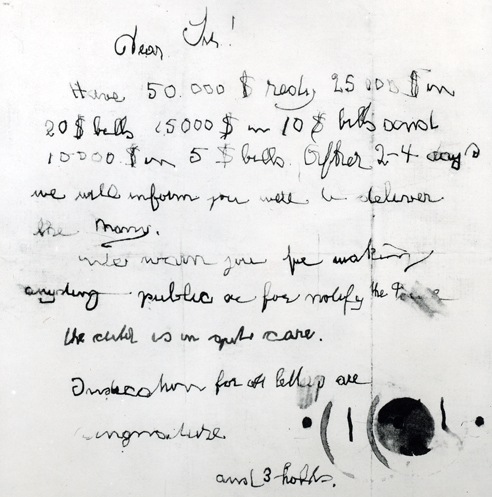
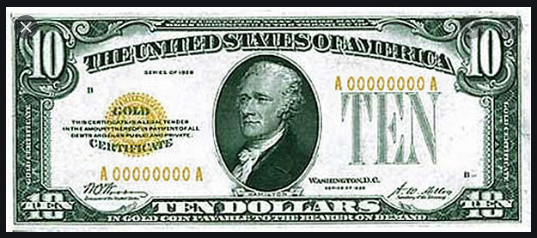
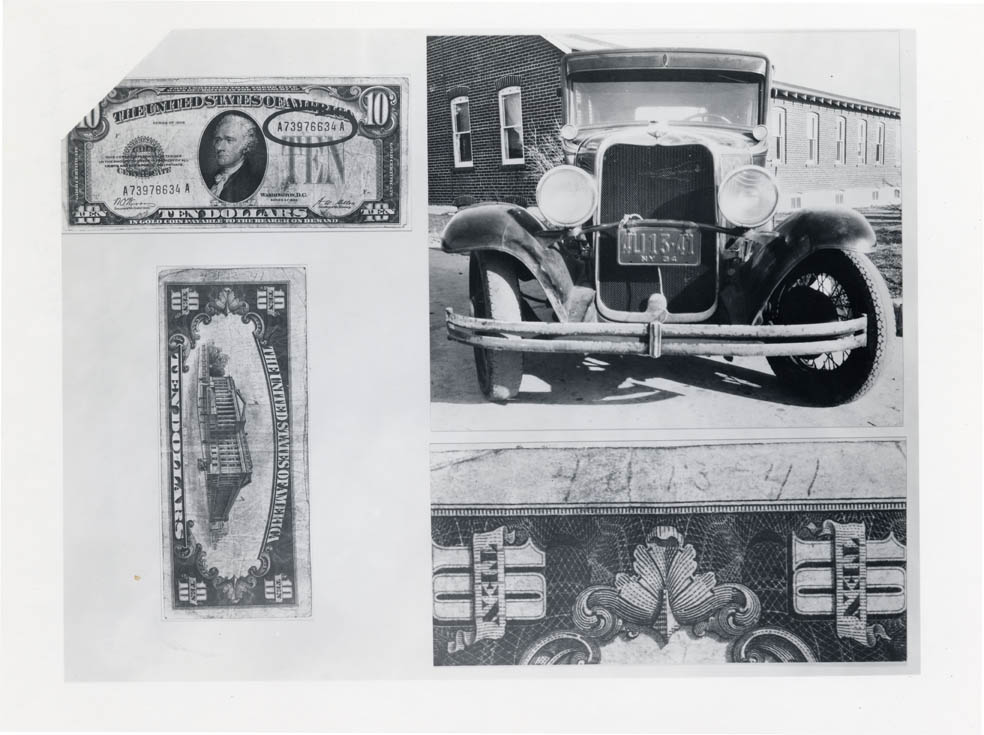
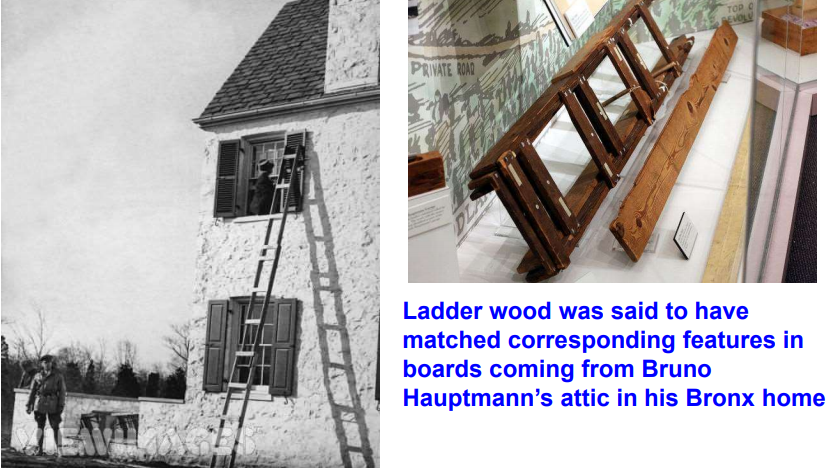
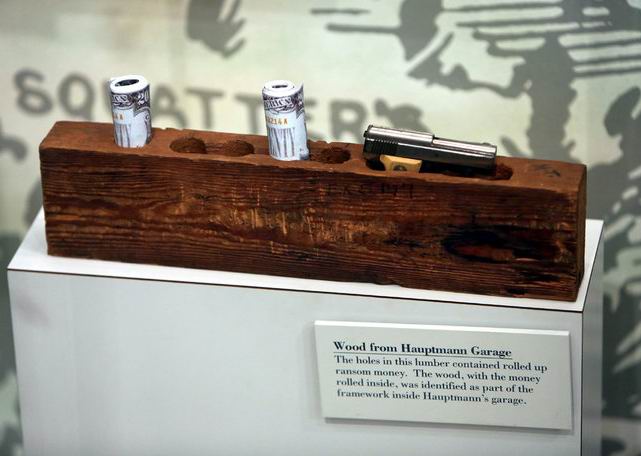







 Jon Morrow holds his numbers closer to his chest. He probably has half a million subscribers and at least six expensive stand-alone products on three different blog sites.
Jon Morrow holds his numbers closer to his chest. He probably has half a million subscribers and at least six expensive stand-alone products on three different blog sites.






